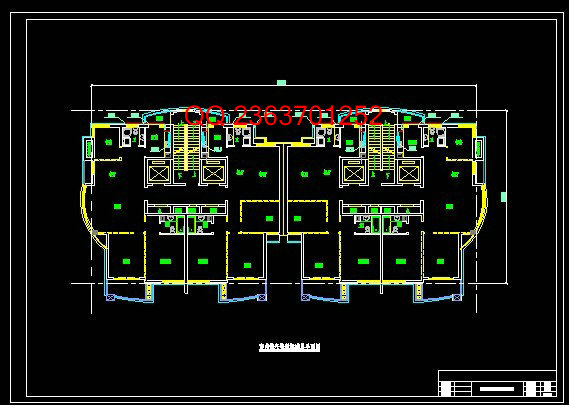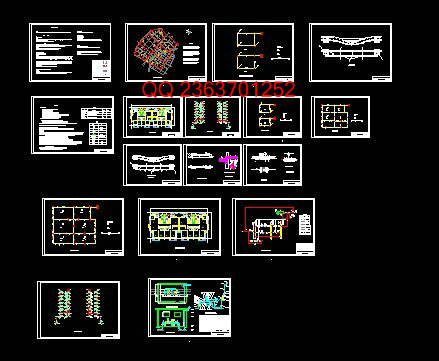|
设计简介 |
部分图纸预览
文档包括:
WORD版本说明书1份,共89页,约45000字
CAD版本图纸,共17张
摘要
工业化和城市化进程决定了中国将处于资源环境压力的上升阶段。矿产资源、特别是能源供给不足,煤炭消费在我国能源结构中仍占70%以上,由于煤炭的大量使用,造成大气严重污染;能源结构的落后,已成为我国经济发展的主要障碍。为保护环境、减少污染、提高居民生活质量,现在必须对能源结构加以改善和优化。近年来石油、LPG进口不断增加,因此,天然气产品作为清洁能源将会日益得到人类的青睐,天然气产业将会受到政府的高度重视而积极推动发展。
铜川市新区位于陕西省中部,处于关中平原向陕北黄土高原的过渡地带,是关中经济带的重要组成部分,介于东经108°34′-109°29′、北纬34°50′-35“34′之间,是陕西省省辖市,新区现有人口20万左右,至2015年达到30万,总面积为45平方公里,城区为18平方公里左右,作为新建市区,政府大力推行天然气洁净能源,从而减少污染,加快城市经济建设。
关键字:天然气 燃气管网 环境保护 供气规划
Abstract
The industrialization and the urbanized advancement had decided China will be in the resources environment pressure the ascent stage. The mineral resource, is specially the energy supplies is insufficient, The coal expended in our country energy structure still accounted for above 70%, As a result of the coal massive uses, cause the atmosphere to pollute seriously; Energy structure's backwardness, has become our country economic development the chief obstacle. In order to protect the environment, the reduced pollution, to improve the resident quality of life, must improve and the optimization to the energy structure. In recent years the petroleum, LPG the import increased unceasingly, Therefore, the natural gas product will take the clean energy to obtain humanity's favor day by day, the gas industry will receive the government to take seriously to promote the development positively.
Tongchuan newly developed area located at Shanxi Province middle, Is in the guanzhong plain to the North Shanxi Loess Highlands zone of transition, is the Guanzhong economical belt's important component, Is situated between the east longitude 108°34 ' - 109°29 ', the north latitude 34°50 ' - 35 “34 ', Is the Shaanxi Province municipality, The newly developed area existing population about 200,000, achieves 300,000 people to 2015, The total area is 45 square kilometers, the city is about 18 square kilometers, As newly built urban district, The government carries out the natural gas pure energy vigorously, thus the reduced pollution, speeds up the urban economy construction.
Key words: Fuel Natural gas;Fuel gas pipe network;Environmental protection; Air feed plan
第1章 绪论 6
1.1城市燃气的重要性 6
1.2 我国天然气的发展概况 6
1.2.1 我国古代历史上对天然气的考察 6
1.3.中国天然气开发利用现状及发展展望 9
1.3.1 中国天然气产业现状 9
1.3.2 我国天然气开发利用现状 14
1.3.3我国天然气行业未来的展望 15
1.3.4影响中国天然气产业发展的因素 17
1.3.5 中国天然气产业发展战略措施 18
1.4 城市燃气设计与规划的原则和任务 22
1.4.1城市燃气设计与规划的目的 22
1.4.2 城市燃气设计与规划的原则 22
1.4.3 城市燃气设计与规划的内容 23
1.4.4 城市燃气设计与规划的任务 23
第2章 铜川市新区概况 24
2.1 城市简介 24
2.2城市燃料资源和能源供应当有关资料 25
2.3天然气及其基本性质 26
第3章 燃气物理、化学性质的确定 28
3.1 混合气体的平均分子量(M) 28
3.2 混合气体的平均密度和相对密度 28
3.2.1 混合气体的平均密度 28
3.2.2 混合气体的相对密度 28
3.3 混合气体的临界参数(标准状态下) 29
3.3.1 临界温度 29
3.3.2 临界压力 29
3.4 混合气体的运动粘度 29
3.5 混合物的低热值 30
第4章 各类用户用气量的计算 31
4.1 用气量计算的原则 31
4.1.1 设计用气量 31
4.1.2 各种用户的燃气设计用气量 31
4.1.3 居民生活和商业的用气量指标. 31
4.1.4 工业企业用气量指标 31
4.2 各类用户的年用气量 31
4.2.1 居民生活年用气量 31
4.2.2 小型公共建筑用气量 32
4.2.3 大型公共建筑用气量 34
4.2.4 工业企业生产年用气量 34
4.2.5 未遇见量 35
4.2.6 年总用气量 35
4.3 各类用户的月用气量 35
4.3.1 居民生活和小型公共建筑月用气量 35
4.3.2 大型公共建筑和工业企业月用气量 35
4.3.3其他月用气量 35
4.3.4 最大月用气量 36
4.4 各类用户的日用气量 36
4.4.1 居民生活和小型公共建筑日用气量 36
4.4.2 大型公共建筑和工业企业日用气量 36
4.4.3 其他用气量 36
4.4.4 日最大用气量 36
4.5 各类用户的小时用气量 36
4.5.1 居民生活和小型公建筑小时用气量 36
4.5.2 大型公共建筑和工业小时用气量 37
4.5.3 其他小时用气量 37
4.5.4 最大小时用气量 37
第5章 燃气输配系统的供需平衡 38
5.1 供需平衡方法 38
5.1.1 改变气源的生产能力和设置机动气源 38
5.1.2 利用缓冲用户和发挥调度作用 38
5.1.3 利用储气设施 38
5.2 本市燃气系统的供需平衡方案 39
5.2.1 季节调峰和月调峰 39
5.2.2 日调峰 39
5.2.3 小时调峰 39
第6章 燃气管网系统选择和管线的布置原则 43
6.1 燃气管网系统的选择 43
6.1.1 城市燃气输配系统的组成 43
6.1.2 城市燃气管网系统 43
6.1.3 采用不同压力级制的原因 43
6.1.4 燃气管网系统的选择 44
6.2 铜川市新区燃气输配系统规划方案 44
6.2.1 城市燃气管道的布线原则 44
6.2.2 布线依据 44
6.2.3 中压管网的布置 45
6.2.3 低压管网的布置 45
第7章 燃气管网水力计算 46
7.1 中压环网的水力计算(手算平差) 46
7.1.1 中压管网的计算步骤 46
7.1.2 计算过程 46
第8章 中压管网水力可靠性计算 49
8.1可靠性 49
第9章 室内燃气管网计算 50
9.1 室内设计资料 50
9.1.1 燃气供应对象 50
9.1.2 燃气供应的设计参数表 50
9.1.3 用户灶具配备 50
9.2 室内管网设计计算 51
9.2.1 室内管道 51
9.2.2 室内燃气管道的管道防腐、附属设备及其安装设计 55
第10章 调压站的设计 57
10.1调压站的组成及其装置 57
10.1.1阀门 57
10.1.2 过滤器 57
10.1.3 安全装置 57
10.1.4旁通管 58
10.1.5 测量仪表 58
10.2 调压站的分类和及选址 58
10.3调压站的布置 59
10.3.1区域调压站 59
10.3.2 专用调压站 60
10.3.3箱式调压装置 60
第11章 门站的设计 60
11.1 设计目的和作用 60
11.1.1 设计目的 60
11.1.2 设计作用 60
11.2 设计规模和参数 60
11.2.1 设计规模 60
11.2.2 设计参数 60
11.3 工艺流程 60
11.4 站址选择 62
11.4.1 站址选择原则 62
11.4.2站址选择 62
11.5 门站 62
11.5.1 过滤装置 62
11.5.2 计量装置 63
11.5.3 调压装置 63
11.5.4 安全阀 64
11.5.5 管道 65
11.5.6 监测与控制系统 65
11.5.7燃气的加臭 65
11.5.8 除尘器选型 67
第12章 总结 68
致谢 69
参考文献 70
附表一 70
附表二 73
附表三 89
|









